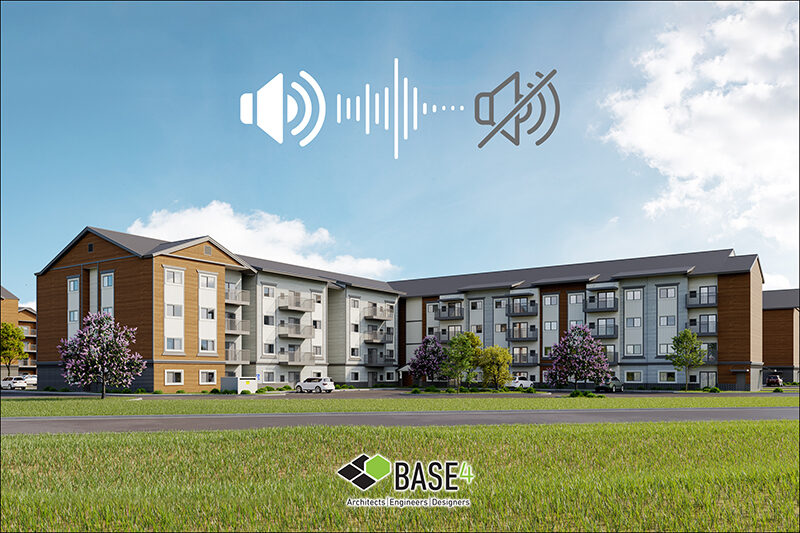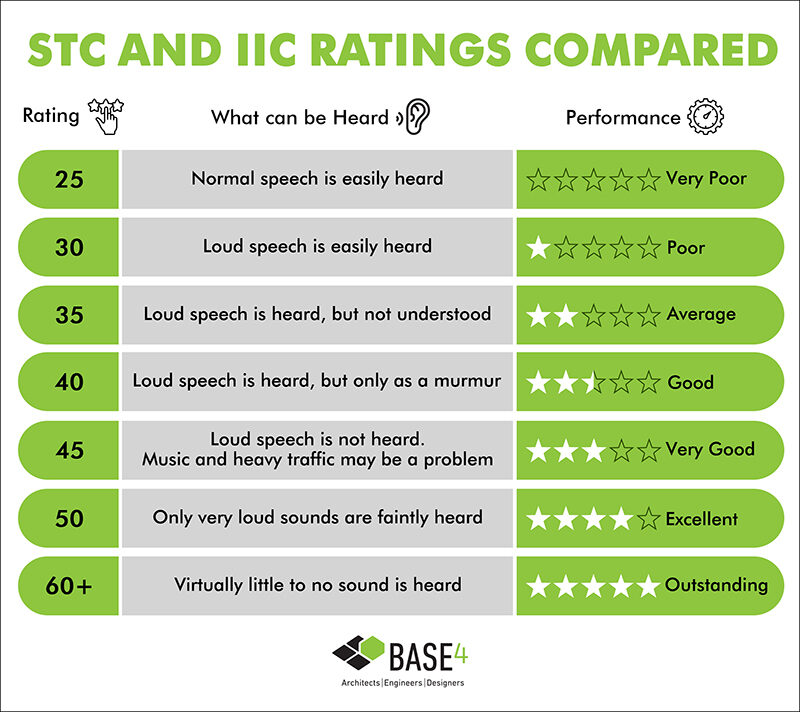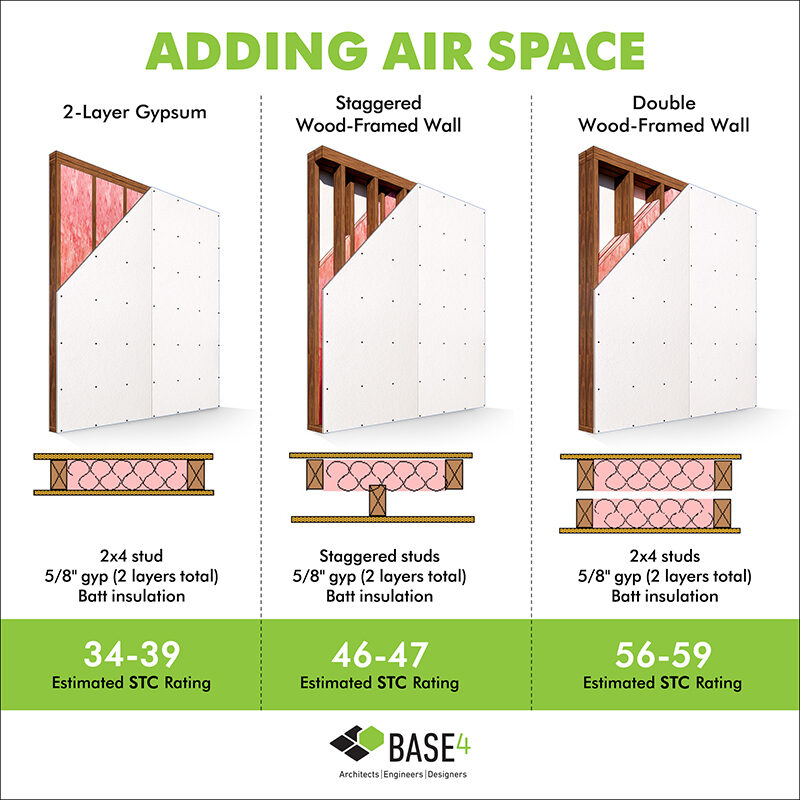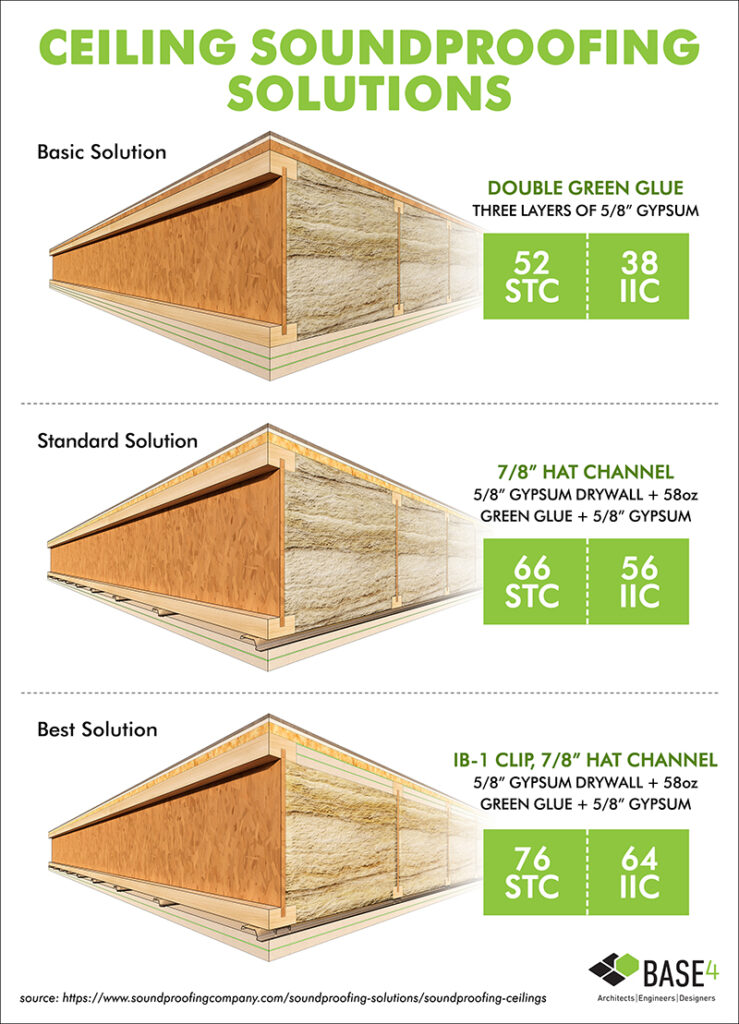Tenants and guests often complain about noise! There might be noise from the outside coming in or noise moving in from adjacent units. The good news! There are practical and economical ways to block noise from the start! Read on!

The right combination of building materials, system designs, and construction methods to provide the most appropriate sound control is key to creating a successful acoustical layout. Sound waves travel through walls, infiltrating the adjacent units.
![]() Wall composition is critical to absorb sound and dampen the volume heard on the other side.
Wall composition is critical to absorb sound and dampen the volume heard on the other side. ![]()
- Sound Transmission Class (STC): Measurement of the ability of a wall or floor assembly to isolate airborne sound and prevent it from passing from one side to the other.
- Impact Isolation Class (IIC): Measurement of the ability of a floor/ceiling assembly to isolate sound from footfall and other impact sources, reducing the intrusion of noise into rooms directly below.
Most projects must meet the International Building Code (IBC) acoustic requirements, Section 1207. The airborne sound ratings of wall assemblies require a minimum laboratory-derived rating of 50-STC (45-FSTC if field tested). The minimum laboratory rating for impact noise at floor/ceiling assemblies is 50-IIC (45-FIIC if field tested).1

In most building designs, the No. 1 acoustical goal is to specify wall partitions, ceiling systems, and floor/ceiling assemblies to minimize airborne transmission and impact sound beyond their areas of origin.
Soundproofing Walls
The most effective way of providing a higher STC rating is to disrupt or disconnect the sound transmission path. Enlarge air spaces by isolating air space within a partition can increase STC performance. The more the air gap separates the materials, the better.

Soundproofing Floor/Ceiling Assemblies
It’s essential to isolate sound. A floor system can develop gaps or cracks, providing a flanking path for sound to travel between building levels. Choosing high-Noise Reduction Coefficient (NRC) ceiling panels for your ceiling assemblies will help absorb a significant amount of the sound generated within open spaces.
Each structural floor has a basic IIC. Then, the designer builds that IIC rating up to comply with the sound requirements by adding a membrane or choosing a floor finish to boost the rating.
Here’s an example:
- 6″ concrete floor slab has 28 ΔIIC points
- Adding hardwood flooring will provide an additional 2 ΔIIC points, making the assembly 30 IIC
- Adding vinyl flooring will give another 7 ΔIIC points, making the assembly 35 IIC
Be mindful of the “tested” IIC ratings on products; these are often tested under specific conditions that may not apply to your project. Always ask for the IIC delta (ΔIIC) number that will provide the rating of the floor finish itself.

These types of products can also assist in the goal of reducing sound transmission:
- Resilient Sound Isolation Clip
- Water-Based, Non-Toxic Compound
- Drywall Designed for Advanced Sound Reduction
- Sound Membrane
BASE4 Is Your Multifamily And Hotel Expert!
We help developers, general contractors, and factories find better ways to build through innovative technology, forward-thinking design, and offsite manufacturing. We believe in a PRODUCT mindset—bringing standardization and manufacturing principles to an outdated system.
Developers: Introducing Design PLUS by BASE4
We know we are in volatile times, where supply chain issues…
BASE4 has a product-centered approach using 100% Revit design. We perform all services in-house, including architecture, structural engineering, MEP engineering, interior design, 3D BIM visualization, and construction administration. We have over 200 engineers, architects, and designers ready to move your projects through to completion—with fewer coordination errors and faster speed.
Stay tuned for more on blocking the noise, where we will talk about HVAC systems noise control.

Thank you,
Blair Hildahl
BASE4 Principal
608.304.5228
BlairH@base-4.com
![]()
Source:
1. https://www.multihousingnews.com/solving-acoustical-problems-in-multifamily-construction/
2. https://www.soundproofingcompany.com/





